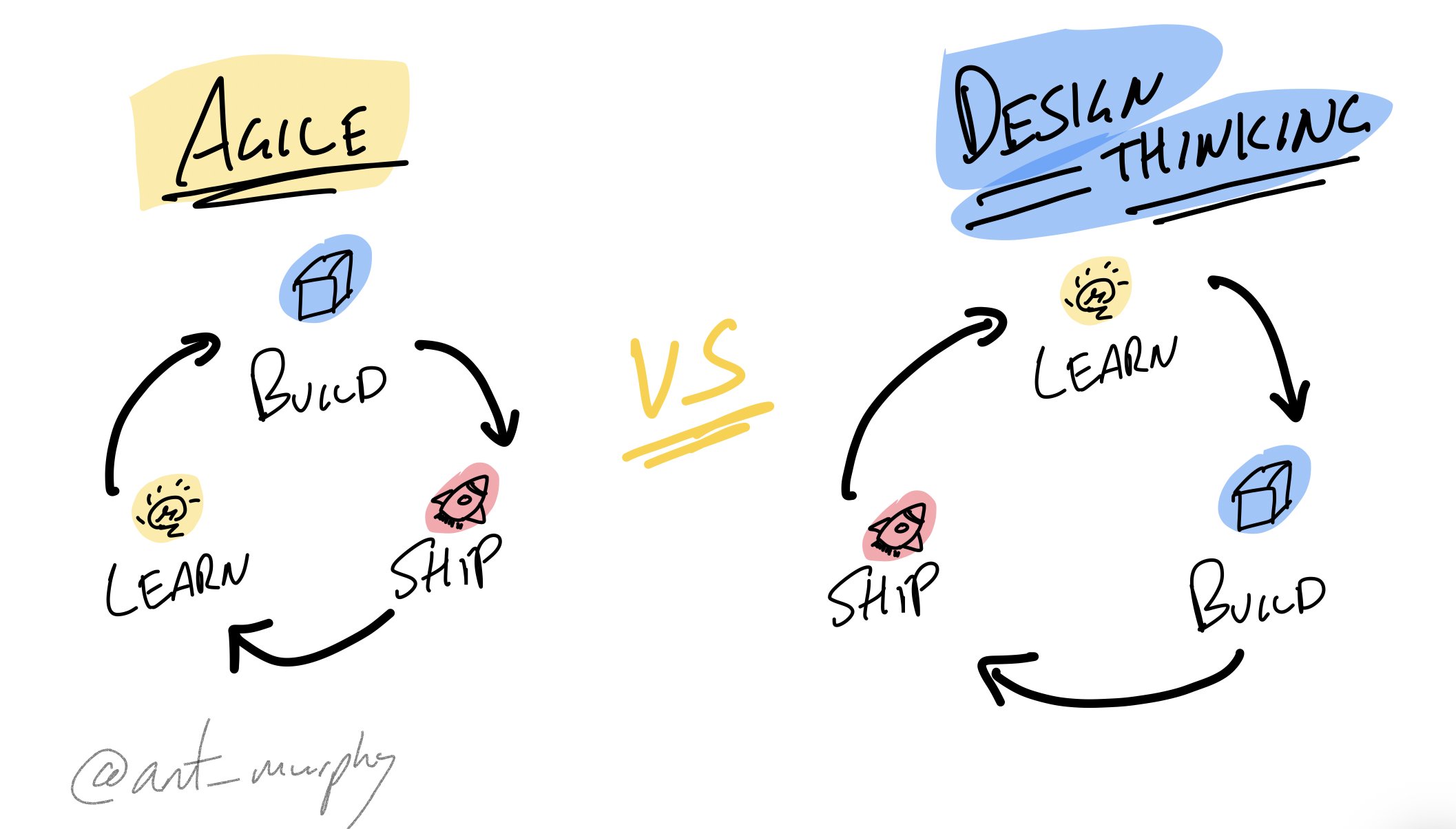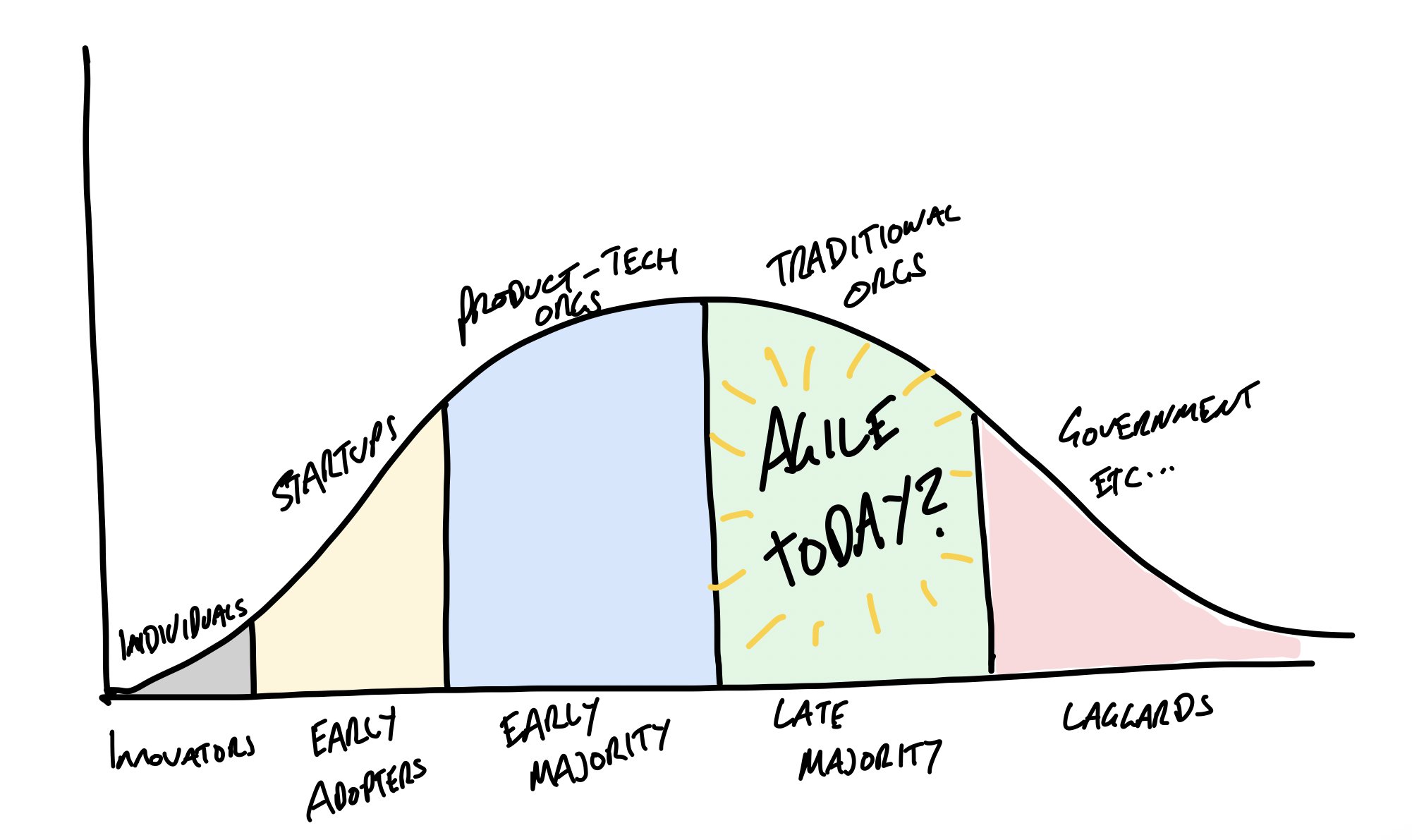The Rise of Product-led Transformations
In 2019 an HBR article stated that of the $1.3 trillion spent on transformations, $900 billion was wasted.
Now I have my own take on why so many transformations fail, but one thing that I find profound is where such transformations are often found.
Digital and Agile transformations alike are seldom seen in product-tech companies (e.g. Canva, Google, Amazon, etc). Moreover, one job search for ‘Scrum Master’ or ‘Agile Coach’ role, and you won’t find them at these companies either — why?
At least here in Australia, the majority of Scrum Master and Agile Coaching roles are found in large traditional enterprises, such as banks.
Even more fascinating are the organisations often admired as being ‘agile’ don’t associate with the term.
I’ve been fortunate enough to peer inside many different organisations as a coach and consultant. From those undergoing such transformations to smaller companies, who arguably are ‘agile’ (but shhh, don’t say it!). And there’s a common theme for those who disassociate with the term — they are far less concerned about labels, titles and philosophies and rather focused on doing great work!
I touched on a few companies which started with labels but moved beyond in my article on The Collision of Product Management and Product Ownership:
“Today (at Atlassian), many agile teams combine practices from a few different frameworks, spiced up with practices unique to the team. Some call this heresy. We call it practical. It’s not about “Agile” — it’s about agility.” — Atlassian on agile
“Spotify is a 100%-Agile company that started with the Scrum framework, but as their teams were growing, they noticed some things on the Scrum framework that weren’t working well for them. So, they decided to break some Scrum roles, artifacts, and events. According to the video, these things were getting in the way, so they decided to make the Scrum roles, artifacts, and events optional.” — Thaisa Fernandes
I hypothesize that this is because these transformations often begin with everyone drinking the ‘agile-coolaid’, but that wears off over time. For some, the pendulum swings back the other way, and they reinstall Project Managers and Requirements documentation… for others, they drop the dogma and seek what works for them.
Putting Product back into Agile
As Jeff Patton’s website once stated:
“There are consultants and consultancies that competently specialize in training and coaching in any of these areas, but that’ll leave your organization with the challenge of integrating them because, you need all three to predictably build successful products.”
I’ve witnessed exactly this.
One experience stands out above the rest. Several years ago, I found myself in an Agile Coaching role within a transformation team.
Most of my experience to date had been in Product Ownership and Business Analysis roles, but I was excited at the challenge.
As a team, we decided that we should “eat our own dog food” (or the more gentle “drink our own champagne”).
Therefore we decided to make our transformation team more cross-functional.
As a result, we brought several roles into the team, from a Communications Manager to Service Designers, to name a few.
With strong alignment in values, such as collaboration, customer centricity, and ‘fail fast’, with the Designers, I thought we would be a match made in heaven, but wow, was I wrong!
Although largely personality-related, we struggled to align as a team.
More significantly, the ‘agile’ team members seemed to be pulling in a different direction to ‘design’ members.
Agile favoured the “ship to learn and we can pivot later”. Whereas design was pulling in a different direction of “learn first, then ship”.
Agile favoured the “ship to learn, we can pivot later”. Whereas Design advocated for “learn first, then ship”.This is when I realised that agile and design thinking had come up with two different solutions to the same problem.
This is when I realised that agile and design thinking had come up with two different solutions to the same problem.
Although they share many similarities;
prototyping
collaborating with customers
a focus on learning
customer-centricity
iterating
outcomes over outputs
etc.
At face value, the design thinking process may easily be mistaken for an agile iteration.
However, this experience exposed a core difference in ideology.
Design Thinking seeks to learn first.
Agile, on the other hand, sought to build first.
What was unfolding was that the agile team members saw design thinking as BUFD (Big-Up-Front-Design). They advocated for building first, shipping and then seeking feedback.
Wheres as the designers saw this as reckless and wanted to learn first.
Being someone who saw both sides of the fence, I struggled to fully appreciate the wall that had been built between both sides — Were we really at odds? I didn’t think so.
Again largely personality-based and dogma aside, I realised a few things:
Many Agile Coaches (at least those I’ve worked with) have come from the IT delivery side. Many have been Development Managers, Project Managers, Scrum Masters, etc., and (by no fault of their own) have had little exposure to design thinking and product management.
The Designers in the team were the opposite. They had little experience with delivery. Most had worked in a design vacuum in agencies or on design projects. They perceived agile as reckless and believed that the design process would guarantee success.
Fast forward a couple of years, and I found myself leading a client engagement to help pivot the organisation to be more product-led.
Interestingly, this company had undergone an “agile transformation” a few years prior. When they hired a new CPO, she quickly realised that although they were doing sprints and standups, they were still stuck in the project mentality, and there was little product discovery going on.
She enlisted us to assist her in bringing more product thinking to the organization - not agile or design thinking but product because we need both to make great products.
The 3 mindsets of Product from 'How Design Thinking, Lean, and Agile Work Together' - By Jonny SchneiderThis was the first time I ever really thought about this type of work being a thing — Product transformations as opposed to agile ones.
But when I saw it, it made complete sense.
Companies jump on the agile bandwagon, and although they see a jump in outputs, it does little to their actual outcomes.
Agile feature factories are so prevalent that we have a pandemic of posts and threads on them — from Dark Scum, Faux Agile and even a whole book, The Build Trap.
Enter Product Coaches
With so many transformation efforts failing, company leaders are looking for a different approach.
Even those who have drunk the agile-cool-aid are beginning to question where strategy and design thinking fit into the agile puzzle.
As a result, they’re gone to market looking for a different skill set.
They’re looking for more product-centric coaches/consultants who won’t just help them ship things faster but also bring discovery, strategy, etc, into the mix.
Years back, this was just a hypothesis, but since then, I’ve been observing this become a reality.
We’ve seen Product Coaching go from simply a label when I started calling myself a Product Coach, to a profession.
More and more people are deciding to become product coaches and the demand for their skill set continues to grow.
I’ve noticed more and more organisations advertise for more product-centric coaching roles, such as “Product Delivery Coach” or “Product Coach” or “Product Management Coach” — even some of the JDs essentially read like Agile Coaches with additional skills in product discovery and other aspects of product management.
We’ve also seen people like Marty Cagan and Silicon Valley Product Group (SVPG) launch a Coach-the-coaches training series and begin to write more about Product Coaching.
Perhaps agile coaching has seen its day.
Like all things agile has moved up the adoption curve and is now in the late majority with the dinosaur enterprises adopting it under false pretenses, merely a case of FOMO.
Has agile moved into the late majority and therefore become a commodity?Where once the innovators and early adopters adopted it, agile has now moved its way through the maturity curve and perhaps reaching a state of decline. Creating quite an ironic state as agile will need to adapt and pivot to avoid this.
Unfortunately, as an observer, I see little of this pivoting and adaptation happening. Instead, I see the industry dominated by dogma and entrenched thinking — the very thinking that those so-called agile coaches call a ‘fixed mindset’ and ‘anti-agile’.
The irony isn’t lost on me.
The biggest pivot I’ve seen the agile industry make in the last decade would probably be the rise of Business Agility.
We’ve seen the formation of the Business Agility Insitute and even the more recent addition of Evidence Based Management (EBM) by Scrum.org (which is not a new concept but a new for Scrum.org, and a new movement)
And these are welcomed adaptions.
I’ve also noticed more Agile Coaches begin to call themselves Business Agility Coaches, OKR Coaches and other variations. No doubt trying to pivot themselves and avoid the decline cliff.
Future: What’s next?
With so many agile transformations failing, I can’t help but to wonder if they were doomed to fail before they even started. Pigeon-holed into the IT department as a project delivery mechanism. Perhaps similar transformations to becoming a product-led organization is the future.
In fact, I’ve personally made a career over the past couple of years and counting on doing this exact thing — helping companies become more product-centric — or as some like to call it ‘product-led’.
Although my business includes other things, like helping product leaders scale and grow their teams the majority of my work has been focused in this space.
But it’s not just me. I’m also seeing it other product management consultants and consultancies begin to take on this kind of work — in fact I was speaking with a CPO of one the other week about it, sharing my experiences.
I’ve also seen more traditional and agile companies begin to pivot to being more product-focused — just look at this screenshot of a job ad from PwC — one of the big four consultancies recently.
PwC job ad from Linkedin — looking for a ‘Senior Agility & Product Manager Coach’Afterall, this has grown from a single experience and a hypothesis to something I seem to be observing globally, so I can’t help but to think that it’s a good bet that this will continue to grow.
Keen to hear what you think, though. Let me know!



